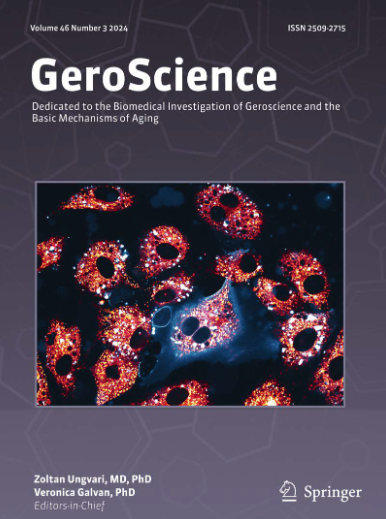Unraveling functional decline: the relationship between muscle strength and ultrasound evaluation of biceps brachii thickness.
IF 5.3
2区 医学
Q1 GERIATRICS & GERONTOLOGY
引用次数: 0
Abstract
Skeletal muscle characteristics play a crucial role in understanding physical capacity, overall health, and outcomes. Muscle strength and muscle mass are key indicators of muscular function and sarcopenia. While previous research has explored biceps brachii muscle characteristics in isolation, there is a notable gap in comprehensive studies examining the direct correlation between biceps brachii muscle thickness (BMT), as measured by ultrasound, and muscle strength. In community-dwelling elderly individuals following physical capacity evaluations, anthropometric measurements, HGS, bioimpedance analysis, and muscle ultrasound for the measurement of biceps brachii muscle thickness were performed. The study population consisted of 156 participants; ICC for ultrasound measurements resulted in 0.96 and 95% CI 0.95-0.98, indicating excellent reliability. The Kruskal-Wallis analysis revealed that muscle thickness differed between age tertiles in both male (p = 0.0005) and female populations (p = 0.001). Regression analysis adjusted for age, sex, BMI, muscle mass in percentage, and comorbidities revealed a significant and independent positive correlation between muscle strength and muscle thickness: R2 = 0.70, β = 0.9, 95% CI: 0.7-1.2, and p < 0.001 in male population and R2 = 0.17, β = 0.2, 95% CI: 0.1-0.4, and p = 0.005 in female population. Muscle thickness of biceps brachii measured by ultrasound and handgrip strength is characterized by a significant and positive relationship in older adults. In both female and male populations, the reduction of muscle thickness is parallel to increased age. Implementation of noninvasive ultrasound evaluation of muscle thickness could be helpful in the early detection of physical decline associated with the aging process.揭示功能衰退:肌肉力量与肱二头肌厚度超声评估的关系。
骨骼肌特征在理解身体能力、整体健康和结果方面起着至关重要的作用。肌肉力量和肌肉质量是肌肉功能和肌肉减少症的关键指标。虽然以前的研究已经单独探讨了肱二头肌的肌肉特征,但在全面研究肱二头肌厚度(通过超声测量)与肌肉力量之间的直接关系方面存在明显的差距。对社区居住的老年人进行体能评估、人体测量、HGS、生物阻抗分析和肌肉超声测量肱二头肌厚度。研究人群包括156名参与者;超声测量的ICC结果为0.96,95% CI为0.95-0.98,表明极好的可靠性。Kruskal-Wallis分析显示,男性人群(p = 0.0005)和女性人群(p = 0.001)的肌肉厚度在年龄层之间存在差异。对年龄、性别、BMI、肌肉质量百分比和合并症进行校正后的回归分析显示,男性人群中肌肉力量和肌肉厚度之间存在显著的独立正相关:R2 = 0.70, β = 0.9, 95% CI: 0.7-1.2, p < 0.001;女性人群中R2 = 0.17, β = 0.2, 95% CI: 0.1-0.4, p = 0.005。在老年人中,超声测量肱二头肌的肌肉厚度与握力有显著的正相关关系。在女性和男性人群中,肌肉厚度的减少与年龄的增加是平行的。实施无创超声评估肌肉厚度可能有助于早期发现与衰老过程相关的身体衰退。
本文章由计算机程序翻译,如有差异,请以英文原文为准。
求助全文
约1分钟内获得全文
求助全文
来源期刊

GeroScience
Medicine-Complementary and Alternative Medicine
CiteScore
10.50
自引率
5.40%
发文量
182
期刊介绍:
GeroScience is a bi-monthly, international, peer-reviewed journal that publishes articles related to research in the biology of aging and research on biomedical applications that impact aging. The scope of articles to be considered include evolutionary biology, biophysics, genetics, genomics, proteomics, molecular biology, cell biology, biochemistry, endocrinology, immunology, physiology, pharmacology, neuroscience, and psychology.
 求助内容:
求助内容: 应助结果提醒方式:
应助结果提醒方式:


